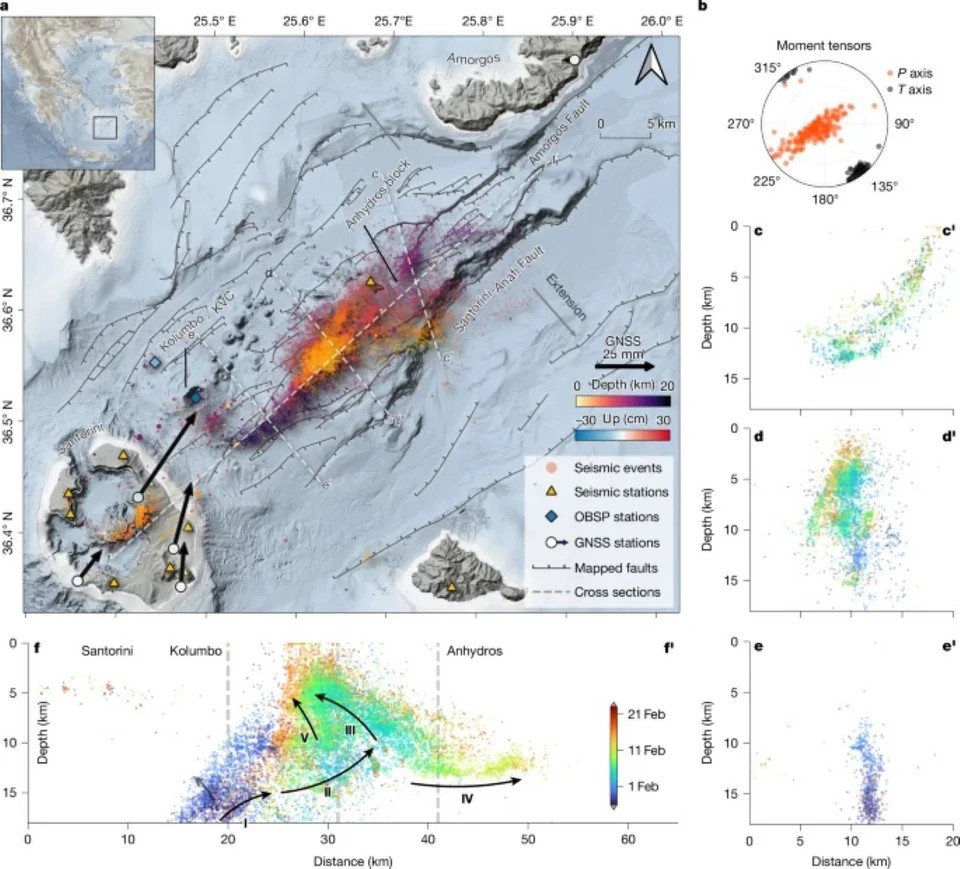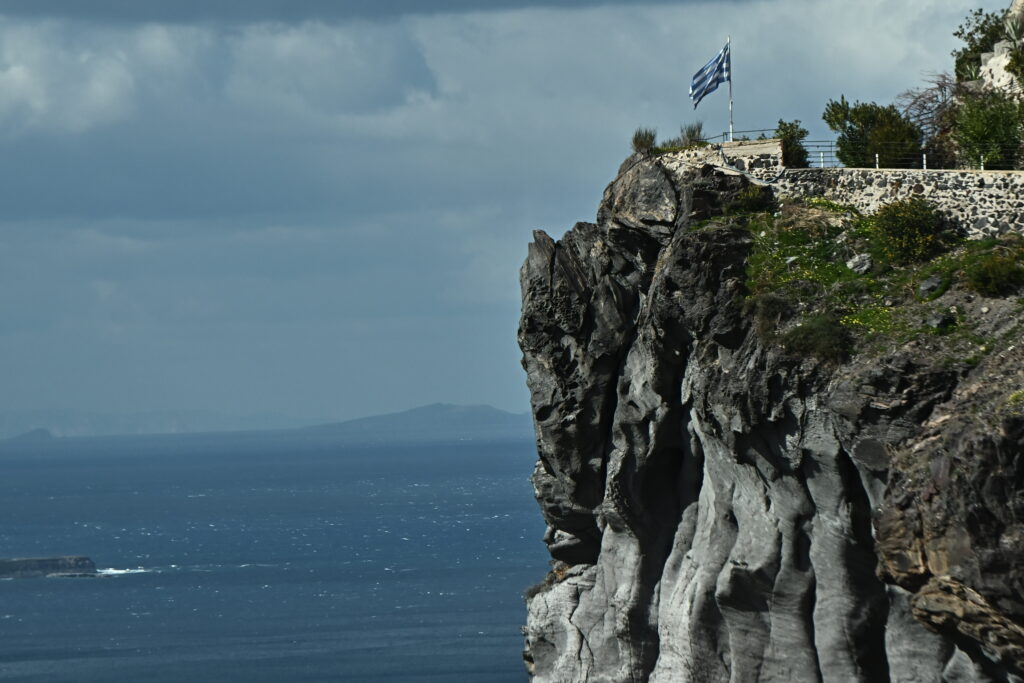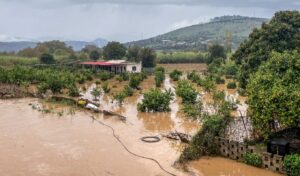It took 31 scientists and a study published in “Nature” journal to reach a conclusion about why seismic activity shook Santorini – and consequently all the Cyclades – in early 2025. Their conclusion, namely the volcanic crisis associated with the continuous earthquakes, is not unprecedented. Even during the tremors, scientists had spoken about this. However, a new element reveals identical magma between Santorini’s volcano and the underwater Kolumbo volcano. The connection had also been mentioned previously. While the latter’s name may sound exotic, it is located just seven kilometers northeast.
The title in “Nature” was “Volcanic crisis reveals a coupled magmatic system at Santorini and Kolumbo.” The discussion centers on magma between the two volcanoes, while the study shows they share the same feeding source.
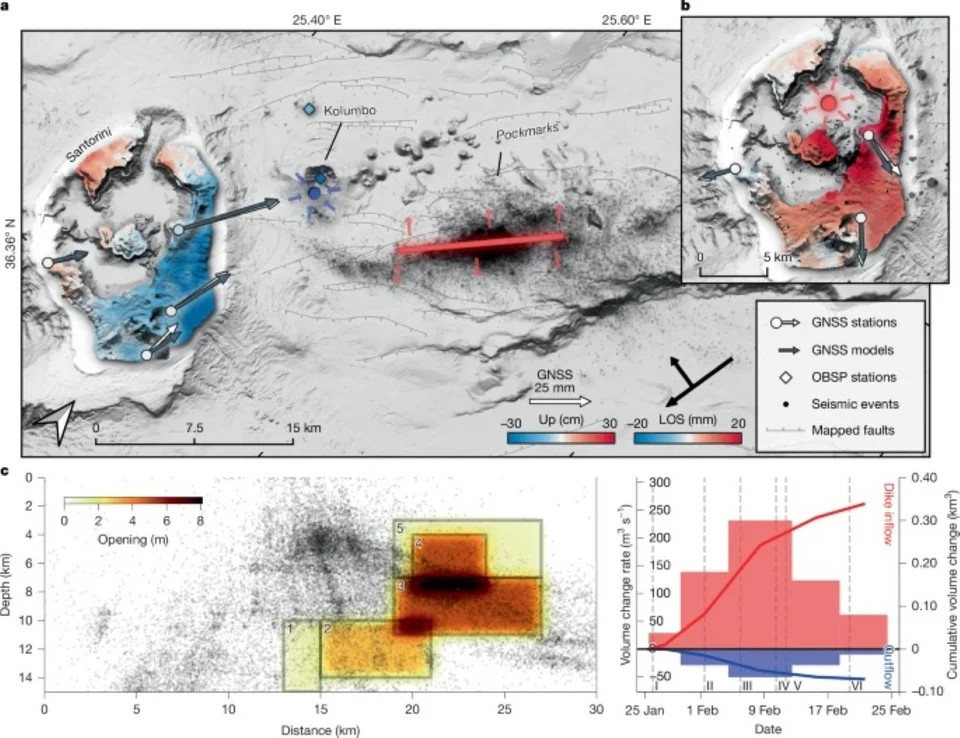
Santorini earthquakes: Beginning from summer 2024
What happened, then, that on January 27th the terrifying dance of Richter scale readings began, lasting a full month? The researchers, four of whom are Greek (Paraskevi Nomikou, Dimitris Anastasiou, Kostas Raptakis and Maria Tsakiri), place the starting point much earlier, namely in summer 2024. That’s when strange data was recorded by Santorini’s monitoring instruments.
According to physicist Florent Brenguier from the French Institute of Earth Sciences (ISTerre) and one of the study’s co-authors, “in early 2025, magma formed a dyke, essentially a nearly vertical fracture in the Earth’s crust, through which it penetrated and moved for 13 kilometers, stopping its course just 3 kilometers below the surface”.
Before the tremors, ground uplift was noted in the Caldera. Additionally, increased volcanic gas emissions were recorded on the neighboring volcanic island of Nea Kameni. The warning signs were there, however at that point the forecast couldn’t be so dire. Nor, naturally, the climax that placed all of Santorini under emergency status in February 2025.
January 27th was the date when hundreds of seismic tremors were detected. These were accompanied by seismic tremor, which is characteristic of magma movement.
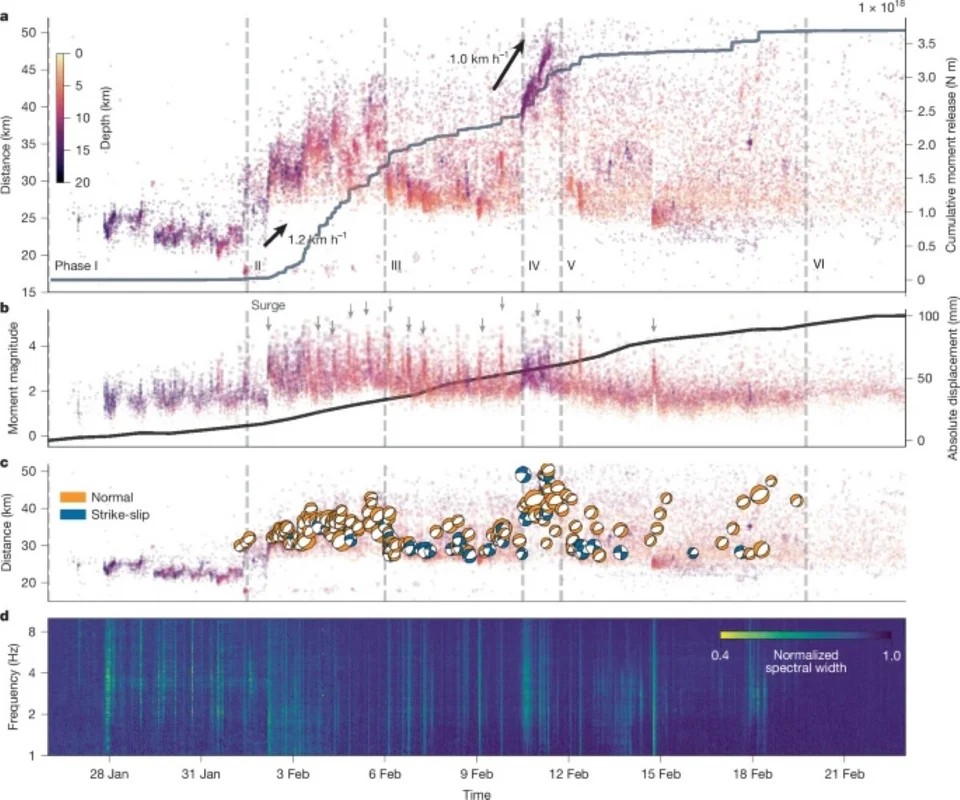
The retreat
In early February, epicenters approached the surface and some earthquakes exceeded magnitude 5 on the Richter scale. Around February 20th, magma flow toward the dyke gradually stopped, earthquakes became less frequent and ground deformation ceased.
However, scientists warn that the area, where the Eurasian and African tectonic plates converge, remains one of Europe’s most volcanically active regions. This means intense phenomena could occur again in the future, even with delays of several months from the first warning signs.
The research team included academics and specialists from Athens, Rome, Berlin and Reykjavik.
